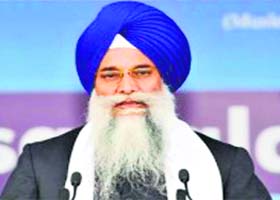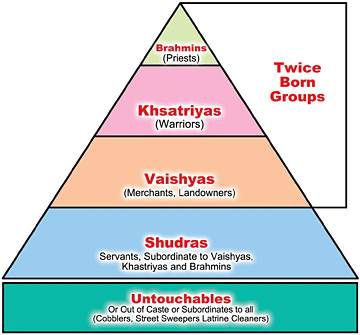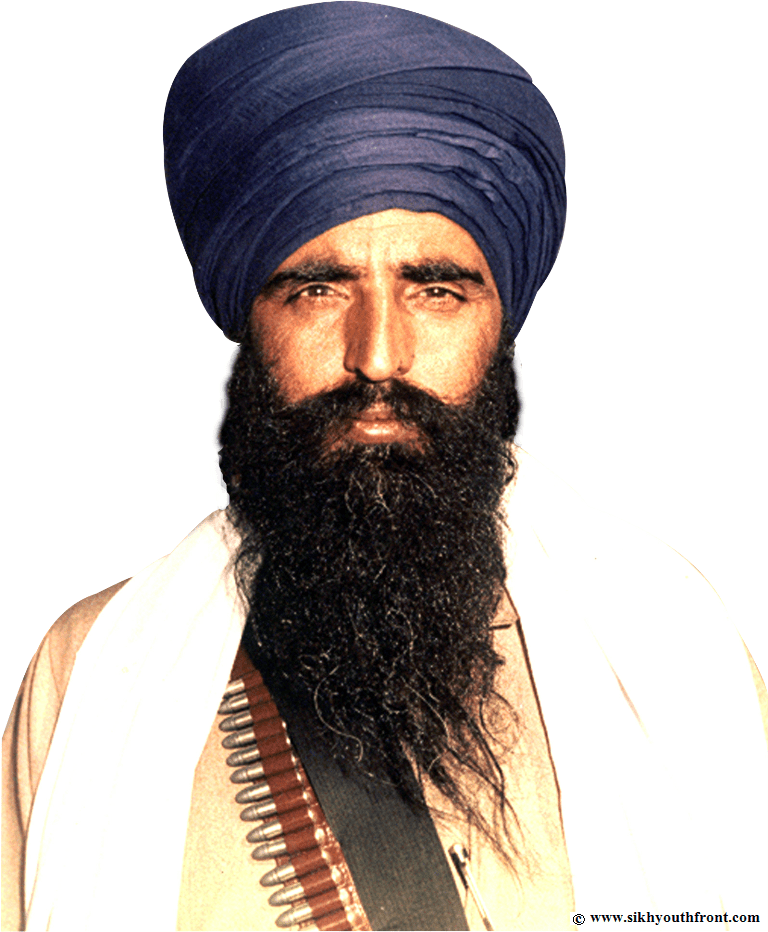This is one of the most crucial and controversial topics of Indian politics. Though writing down about it on a blog may not get it the kind of attention that it deserves and may not be read with the seriousness that it should be, but that won't stop me from verbalizing it for the greater good of the country and the humanity. It's a common century old phenomenon that Hindu radicals keeps on claiming the Hindutva of the sikh gurus on various grounds and sikh radicals keep on rubbishing their claims with their counter-arguments and we, the normal and the neutral Indians follow them blindly out of our faiths and get slaughtered for them like scapegoats, serving to the best of their vested interests.
I firmly believe that the normal citizens of the country shouldn't fight in the name of religion especially Hindus and Sikhs because there are dedicated militant organizations in both the communities who are solely prepared for this purpose. Hindus have their RSS, VHP, Bajrang Dal etc. etc. and sikhs have their Nihangs, Dal Khalsa, Taksalis and even SGPC task force can do the job of paid goons very well. So if there are such organizations present around you, who serve the purpose of conditioning tender minds to fight and die for religion till the last breath, then there's no point for a common man to pick up sword to protect his religion.
Even there are fanatic preachers in both the communities who make hollow predictions as "There won't be any sikh left one day and all the sikhs will come back to the hindu fold" or "One day the hindus will realize their mistakes and fall in guru's feet for repentance and convert to sikhsim".... Rubbish and Hilarious.... Isn't it ?? Though many of the radical Hindus try their level best to project Sikhism as the offshoot of Hinduism, there are Sikh radicals who try their level best to project Sikhism as a refined and a superior form of Hinduism. If we just rubbish all these statements and try to be rational in addressing the issue, we can address it better if we try and figure it out from a socio-political perspective rather than a religious perspective.
Though I do not want to use that old reference of the word "Hindu" being a geographical term rather than a religious one, I just want to point out that fact that both the religions have emerged on their own and can take care of themselves, we just need to look after ourselves not our religions for that matter. I believe that the ultimate solution for Hindu and Sikh masses is peaceful coexistence. Because both these communities have diverted from their basic tenants if they introspect.
Where sikhs assume that hindus have snubbed them being a majority community in India and tried their level best to curb their separate and original identity, their real individuality, Hindus especially in Punjab accuse sikhs for alienation. Though, it may be in the best interest of the masses that the Article 25 of the constitution (which recoganizes sikhs as hindus) gets cancelled or repealed, but I feel that it may be in the best interest of the ruling class to keep the dilemma going in order to use the insecurity of "identity crisis" to bank on the sikh dominated vote bank in Punjab.
I have touched the issue of separate sikh identity in my article "Sehajdhari rights and sikh quota" but if such a law is passed it will have some ripple effects in the centuries old cohesive existence of the two communities. Honestly, being a liberal sikh, not associated with any radical or a separatist outfit, a law should be passed to establish the separate identity of sikhs, purely on humanitarian grounds. One has the right to be oneself and no one can take away his/ her individuality and religious identity is a vital part of a person's individuality and making it subservient to some other religious identity directly effects that person' zeal for life.
Though I have not mentioned about the work of a famous sikh encyclopedist Kahn Singh Nabha called "Hum Hindu Nahin" (Sikhs are not Hindus) written in 1898 whereby he technically proved by using references from both sikh and hindu scriptures that these are two different communities. But one thing is clear that this book is 117 years old and hasn't been able to achieve its objective yet in the Indian polity, then we can definitely say that either something is wrong with the book or something is wrong with the Indian polity ;-)
I firmly believe that the normal citizens of the country shouldn't fight in the name of religion especially Hindus and Sikhs because there are dedicated militant organizations in both the communities who are solely prepared for this purpose. Hindus have their RSS, VHP, Bajrang Dal etc. etc. and sikhs have their Nihangs, Dal Khalsa, Taksalis and even SGPC task force can do the job of paid goons very well. So if there are such organizations present around you, who serve the purpose of conditioning tender minds to fight and die for religion till the last breath, then there's no point for a common man to pick up sword to protect his religion.
Even there are fanatic preachers in both the communities who make hollow predictions as "There won't be any sikh left one day and all the sikhs will come back to the hindu fold" or "One day the hindus will realize their mistakes and fall in guru's feet for repentance and convert to sikhsim".... Rubbish and Hilarious.... Isn't it ?? Though many of the radical Hindus try their level best to project Sikhism as the offshoot of Hinduism, there are Sikh radicals who try their level best to project Sikhism as a refined and a superior form of Hinduism. If we just rubbish all these statements and try to be rational in addressing the issue, we can address it better if we try and figure it out from a socio-political perspective rather than a religious perspective.
Though I do not want to use that old reference of the word "Hindu" being a geographical term rather than a religious one, I just want to point out that fact that both the religions have emerged on their own and can take care of themselves, we just need to look after ourselves not our religions for that matter. I believe that the ultimate solution for Hindu and Sikh masses is peaceful coexistence. Because both these communities have diverted from their basic tenants if they introspect.
Where sikhs assume that hindus have snubbed them being a majority community in India and tried their level best to curb their separate and original identity, their real individuality, Hindus especially in Punjab accuse sikhs for alienation. Though, it may be in the best interest of the masses that the Article 25 of the constitution (which recoganizes sikhs as hindus) gets cancelled or repealed, but I feel that it may be in the best interest of the ruling class to keep the dilemma going in order to use the insecurity of "identity crisis" to bank on the sikh dominated vote bank in Punjab.
I have touched the issue of separate sikh identity in my article "Sehajdhari rights and sikh quota" but if such a law is passed it will have some ripple effects in the centuries old cohesive existence of the two communities. Honestly, being a liberal sikh, not associated with any radical or a separatist outfit, a law should be passed to establish the separate identity of sikhs, purely on humanitarian grounds. One has the right to be oneself and no one can take away his/ her individuality and religious identity is a vital part of a person's individuality and making it subservient to some other religious identity directly effects that person' zeal for life.
Though I have not mentioned about the work of a famous sikh encyclopedist Kahn Singh Nabha called "Hum Hindu Nahin" (Sikhs are not Hindus) written in 1898 whereby he technically proved by using references from both sikh and hindu scriptures that these are two different communities. But one thing is clear that this book is 117 years old and hasn't been able to achieve its objective yet in the Indian polity, then we can definitely say that either something is wrong with the book or something is wrong with the Indian polity ;-)











